2020 Travel: How Hard Is It to Go to Hawaii Right Now? (And Should You?)
A timeline of my harrowing experience traveling to Hawaii from the mainland US in December, 2020. Including COVID-19 restrictions for Hawaii at the time, the pre-travel test I took in the airport, and whether the trip makes sense during a pandemic – ethically or otherwise.
A long, long time ago, I wrote a pair of posts called The Future of Travel, Post-Pandemic and Travel, Climate, Coronavirus and Change. They were pretty philosophical and, when taken together, sort of upbeat. I thought this pandemic experience would be make us all value travel more and decide to travel better – more sustainably, more thoughtfully.
Sure, call me naïve. Maybe I had no idea what I was talking about, but what can I say? It was March. None of us did.
We’ve all lived through long months of confinement and stress and uncertainty and loss. For me, there were lots of cancelled travel plans (AKA jobs) and hours spent pondering the actual wisdom of a career as a travel blogger, as I pivoted to staying home and writing about plastic. (Which I’m also passionate about, but let’s face it: It’s just never going to be as exciting as travel writing.)
So despite 2020 being the year I built a new website and relaunched my travel blog, the only travel I’ve done this year wasn’t really travel at all: It was a move from Chicago to Montana to get – I thought – further from COVID. (With seven people per square mile, Montana is good for avoiding human contact.)
And after a lot of research into whether travel could actually make sense right now (more on that below), my husband and I decided to use his soon-to-expire vacation days on one very specific trip: To Hawaii, to visit my cousin and his wife, who moved to Maui last year.
So here’s what it’s like to travel – almost a year into the pandemic – from a destination that still has COVID, to one that’s taking it seriously, unlike much of the mainland US right now. And it’s probably a more realistic look at the future of travel than the ones I wrote back in March.
Hawaii Trip Timeline & COVID Restrictions:
All summer: Following updates on Hawaii potentially re-opening to tourism, and scheming with my cousin whether and when it would make sense to go for a visit.
October 15th: Hawaii reopens to tourists! With the caveat that they bring a negative COVID test from a very select list of providers, taken no more than 72 hours before boarding their flight. I start investigating whether this trip would even be possible.
The closest “local” testing site approved by the state of Hawaii is a CVS that’s 400 miles round-trip from the small town where I live.
Next, I look into mail-in testing. They ship you a kit for $119, you swab your nose while a doctor watches on Zoom, then you overnight the swab back to the lab in New Jersey. But it was absurd. The company sanctioned by the state of Hawaii normally specializes in… sex therapy? (“Personalized healthcare for men and their manhood.”) Seriously, Hawaii? But only one clinic in the entire state of Montana meets your requirements?
The manhood lab guarantees results 48 to 72 hours from when they receive the sample. So considering the swab’s overnight travel time to the clinic, and the fact that Hawaii won’t accept results from swabs taken more than 72 hours before boarding a Hawaii-bound flight, I don’t even see why this company is on the list.
Finally, I find the only option that might work: A few airports offer COVID-19 testing right there in the terminal, with results available that day. In Seattle, it costs $250 a test. Gulp.
November 6th: Book our flights on Alaska Airlines (because they’re still blocking middle seats), and our COVID tests in the Seattle airport!
Here’s the plan: A quick, early-morning flight from Montana to Seattle, COVID tests half an hour after landing, hide out in some corner of the airport while we wait, and a late-afternoon flight to Maui. Our test results will be available by the time we land at midnight, ready to present to airport officials.
November 17th: They’ve approved 13 new testing sites! Great, maybe I can simplify the plan! I look at the new options and… None of them are anywhere near Montana. (But it’s good news if you live in New Jersey or California.)
November 19th: The Governor announces that test results have to be uploaded to Hawaii’s Safe Travels website before boarding a flight there. Our flight is scheduled to depart Seattle at 5:30 pm, and our same-day test results are “likely to be available” by 6 pm, or midnight at the latest.
This is not going to work.
November 21st: Look into every possible solution I can think of (including flying out of the one Montana town with a CVS, but that would have added an extra layover to the trip).
Call Alaska Airlines to move our flight from Montana to Seattle 24 hours earlier.
(Alaska was one of several airlines that recently eliminated change fees for main cabin tickets – even for after the pandemic – but the fare difference still added about $300 each. I sprung for the extra social distance of First Class, because it was only $30 more than economy, and because at that point, I didn’t really care.)
With a 33-hour layover now scheduled in Seattle, I book a room in a hotel near the airport.
Just a year ago, I was booking extra-long layovers on purpose to explore new cities (most recently, in Porto). Now, I’m booking extra-long layovers to be sure to get my test results back from the airport lab.
Finally, I call to move our tests a day earlier. So we’ll get tested Thursday morning for our Friday afternoon flight to Hawaii. But I’m told the lab no longer offers same-day results. When I ask the very friendly testing company employee if they can guarantee results by 5 pm Friday, she takes a long pause and says, “No… but I’m pretty sure they’ll be ready in time. I wouldn’t worry.” Easy for her to say.
November 27: The island of Kauai opts out of Hawaii’s Safe Travels program, meaning anyone arriving there will have to quarantine for 14 days, test or no test. My blood pressure goes up a notch wondering if Maui will follow suit.
December 3: Departure day! The airport in Kalispell, Montana, (which only has 3 gates) is half empty. So is the plane.
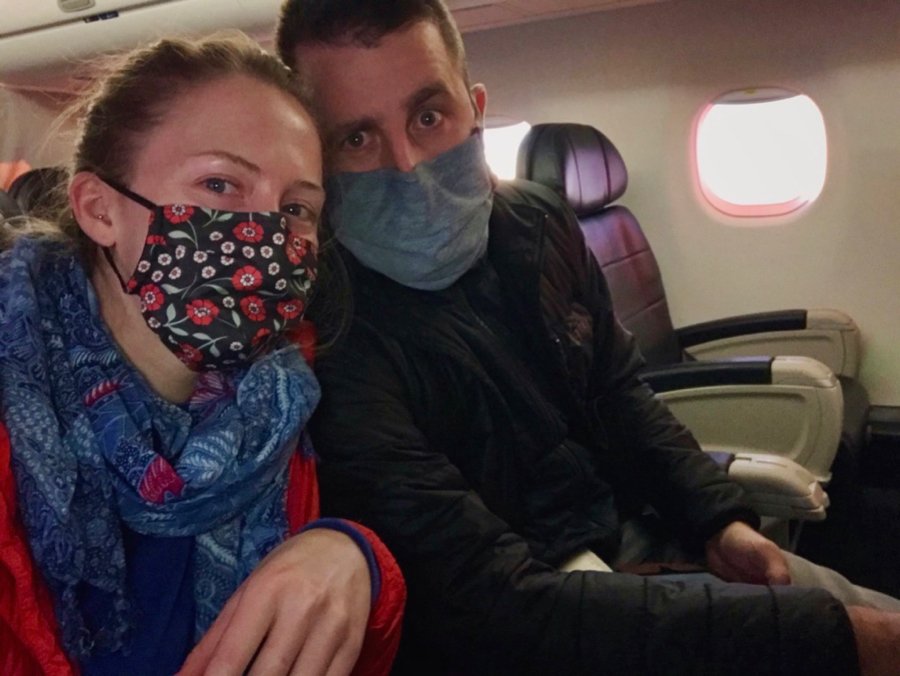
7:45 AM: Land right on-time and make our way through another empty airport to the COVID testing “clinic,” which is set up in what looks like a former conference room near the ticketing counters. We’re an hour early for our appointments, but they get us in without waiting.
Instead of the scary-looking, brain-scraping kind of test I’ve seen all over the news, we just have to stick a cotton swab about 2 inches inside each nostril, and rub it around in a circular motion for 10 seconds. We do this to ourselves, while a doctor coaches us.
8:50 AM: I call the Double Tree where we have a reservation, and they send a van to pick us (and only us) up. By 9 AM, we’re in our room.
9:04 AM: I accidentally call 911 while obsessively sanitizing the room phone, along with every other surface. Seriously. You can ask Voltaire, who graciously lets me off the hook after calling me back from the front desk because 911 wants to know what’s wrong. (I’m sorry, Seattle.)
(For the record, there was nothing about the room that made me think I needed to sanitize anything, apart from germaphobia and extreme caution – two very new things for me. It was clean and comfortable, the service was great, and our room had a perfect view of Mt. Rainier. If you have a layover in Seattle, I recommend it.)
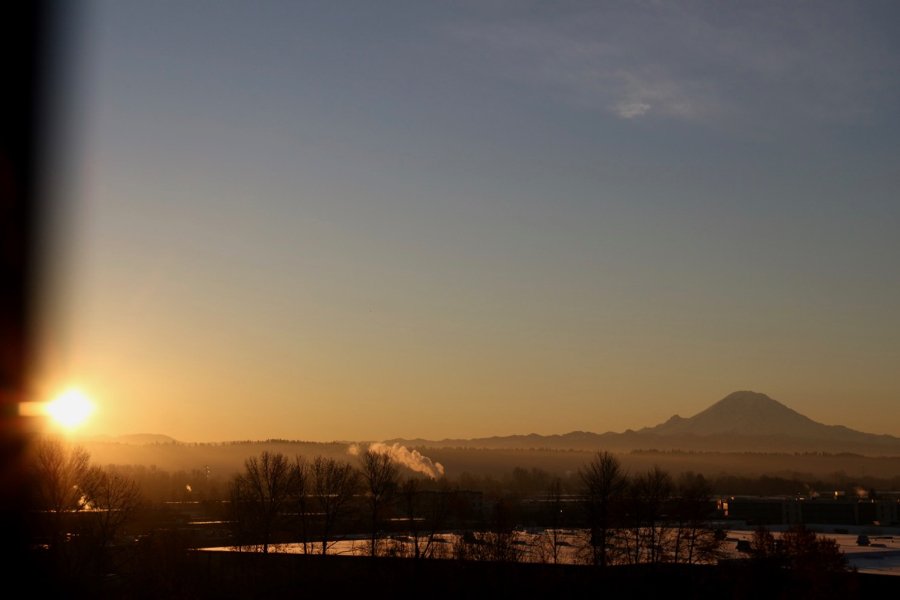
The Rest of Thursday: We spend the day like a normal remote-work day, walk to get take-out for lunch, and take a Lyft to Trader Joe’s to pick up a few things for a light dinner in our room.
If things go badly, we’ll have flown first class to Seattle for a coronavirus test and a couple of sandwiches, only to turn around and go straight home into quarantine. And we’ll have unnecessarily spread the virus.
Friday Morning: Wake up to an email with our test results: WE PASSED!!
I’m sorry I doubted you, woman on the phone who told me not to worry!
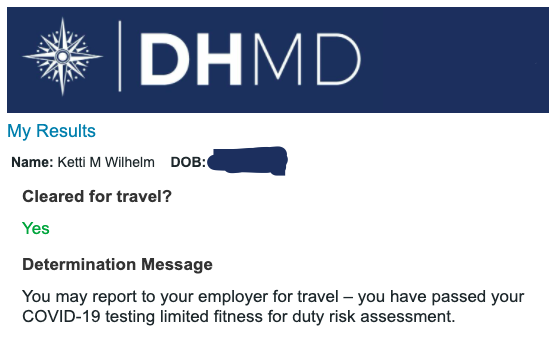
After jumping through all the hoops to allow as much leeway as possible to get our results before boarding the flight, I was sure they were going to end up being available a day before boarding.
Well, I was right. The email came in at 7:15, and it said the lab had shared the results at 9 PM the night before.
Is it easy to travel to Hawaii right now?
No. Should it be? No!
The rules are burdensome and expensive to comply with, but Hawaii has every right to implement them in order to keep locals (and tourists) safe. I think it’s smart that they’ve opened up to tourism so that local businesses can start to come back, and it’s just as smart that they’re keeping it strictly controlled and enforcing the rules.
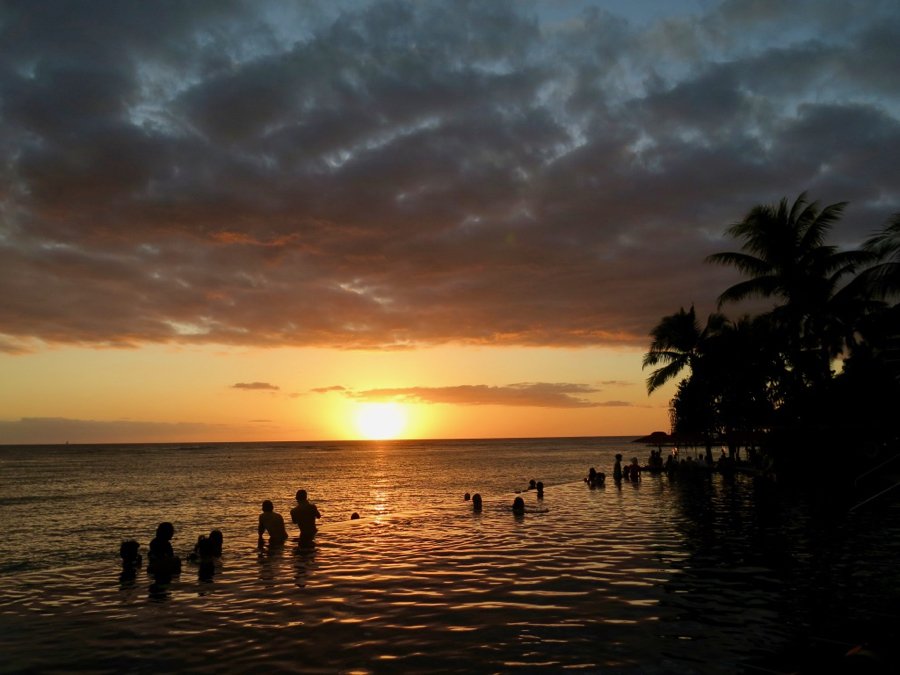
Because that’s one thing about riding out the pandemic in Montana, as I’ve been doing since this summer: There’s low population density, which is helpful for limiting virus spread, but there’s high stubbornness. A lot of Montanans think it’s still the Wild West, the rules don’t apply to them, and they should be allowed to do whatever they want – ignoring their neighbors’ health.
We’re only as safe as people’s individual actions allow us to be. (Or, the rules are only as good as their enforcement, depending on how you want to look at it.) And in Montana, I see people in the grocery store without masks all the time, despite a state-wide mask mandate. But there’s no mechanism for enforcement. (A lot of people do wear masks in Montana, but a significant minority does not.)
Does It Make Sense to Travel to Hawaii Right Now?
Even before the ethics part of the decision, I don’t know if I’d recommend to anyone but the hardiest travelers to go to Hawaii right now. Yes, cases are pretty low there, rules are well enforced, and the local travel economy could certainly use the help.
But this trip has required a lot more planning than normal – stressful planning. It’s been a hassle to keep up with the constantly changing regulations, which have added hundreds of dollars to the price tag per traveler. Traveling safely during a pandemic is an experience, that’s for sure, but it’s not simple.
Now that cases are reaching yet another peak in the US, we would be cancelling this if it were a normal trip, and we were planning to stay in hotels. (Actually, if that were the case, we probably never would have booked it.)
But the fact that we’ll be staying with family members who are low-risk and are also being really careful about avoiding the virus makes it a different kind of decision. And it’ll make it easier to stay more isolated.
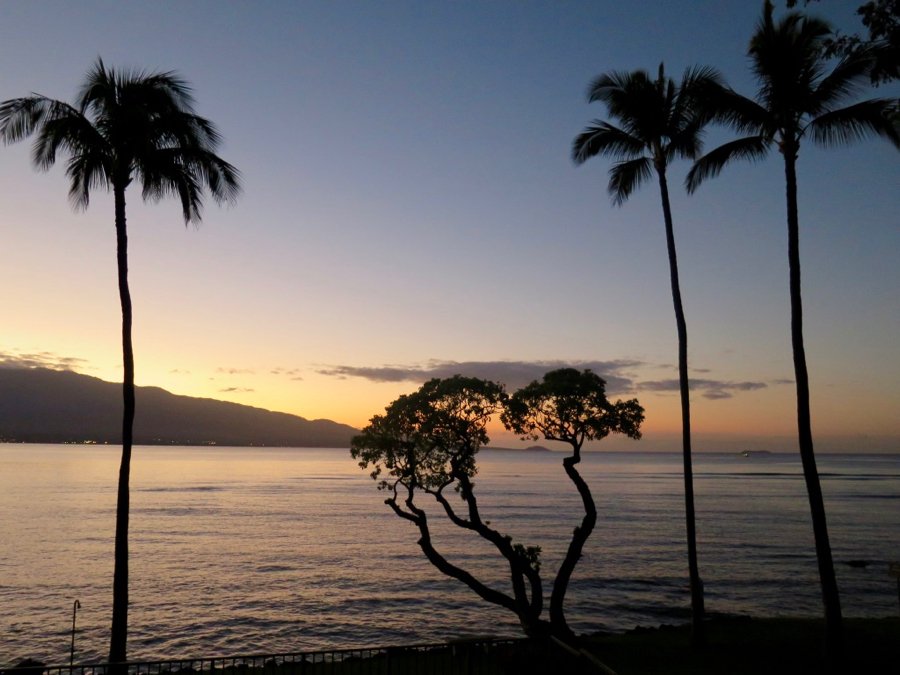
Even though I won’t be staying in hotels, and won’t eat out except for some take-out meals, I’m excited to be able to support some local businesses on Maui. The travel industry has taken a hit this year, and that means a lot of small businesses and people’s livelihoods. (Globally, 10% of people work in tourism. In Hawaii, it’s closer to 20%.) So I know the businesses on Maui that are open right now will appreciate my socially-distanced, sanitized, masked-up business.
Is this the real future of travel, post-pandemic?
I don’t know if there’s going to be a “post-pandemic” that looks anything like pre-pandemic. We don’t have, and never have had, a right to travel. It’s a privilege, and I think it’s only going to get more complicated.
We’ve been spoiled with cheap flights and relatively easy travel the past few years, and I doubt it’ll go back to being as cheap or easy as it was before. A lot of businesses have gone bankrupt, and less selection generally means higher prices. Plus, destinations might continue to require expensive pre-travel testing or proof of vaccination.
And while traveling from rural places used to be really hard, it’s gotten easier over the years with low-cost airlines, and generally better transportation connections. But maybe it’s going to be harder again (as I learned it currently is from Montana) with new restrictions and testing requirements, and less demand meaning fewer connecting flights.
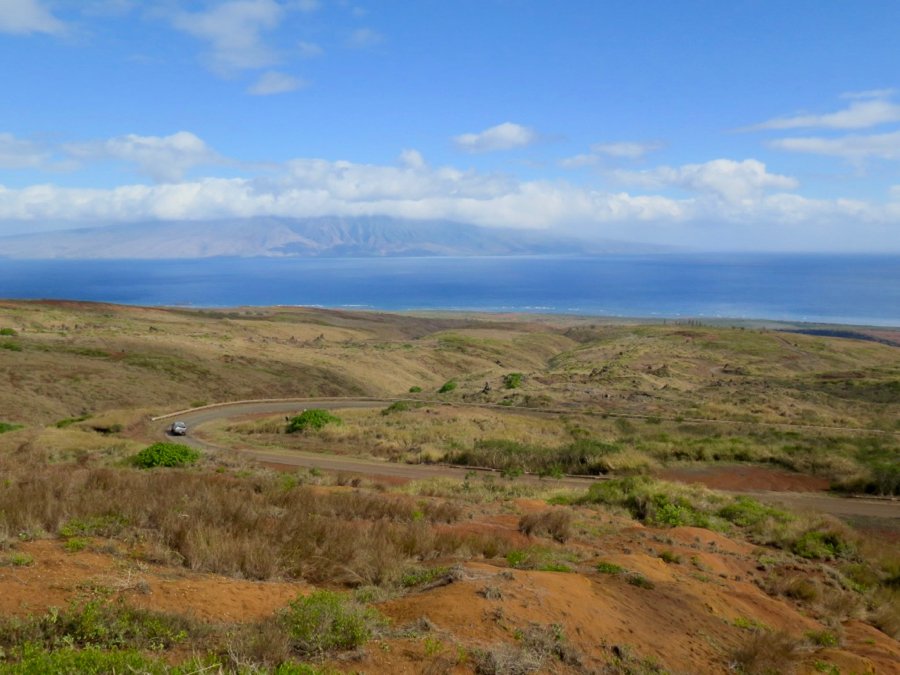
I hope all this will mean people will take more time to plan trips, and carefully choose more sustainable travel companies (like Intrepid Travel, one sustainability stand-out that I’m looking forward to traveling with). But maybe it’ll just be another race to the bottom, and the most cut-throat companies will survive, not the most ethical.
The good thing is, we get to help decide which companies survive. Travel certainly isn’t an essential; it’s a luxury, so we can choose the most ethical companies instead of the cheapest.
Does It Make Sense to Travel At All Right Now?
Travel has always been a risk, hell, leaving your house has always been a risk. But I think people have forgotten that how you do it has always made all the difference.
Traveling while following the rules of the destination and taking precautions, is a calculated risk that I’m willing to take. But everyone has to make that decision for themselves, based on your own tolerance for risk, and that of the people you take care of at home, or spend time with.
But even more than that, I think the answer depends on your willingness to follow the rules: If you don’t feel comfortable wearing a mask or maintaining social distance or following the rules of local governments (regardless of whether they’re strictly enforced), then stay home. It’s that simple.
This trip is certainly a risk, but we’re doing everything we can to minimize it.
“Travel Shaming” – An Ethics Chat from My Hotel Room
Hopping on a Zoom call about travel shaming from an airport hotel is probably the most quintessentially 2020 thing for a travel blogger to do.
And even though I’m traveling carefully, I’m still expecting to catch some “travel shaming” flak for it – which is basically just people piling on, digitally or not, to tell a traveler that any kind of travel is wrong right now. Lots or articles this year have anecdotes about people not sharing their travel on social media out of fear of it. (It’s also a variant on “flight shaming,” which popped up in 2019 as a response to the CO2 emissions of flying.)
On Thursday morning, I joined a webinar hosted by Wanderful, the women’s travel community and travel conference host, to listen to a panel discuss travel shaming in pandemic times.
Here are some of my favorite ideas the discussion:
Travel blogger and medical doctor Nadeen White said she took a road trip to Hilton Head this summer and people on social media were annoyed that she was “encouraging travel” during the pandemic. To which she said, “I’m not encouraging it!” She was letting people know what to do and how to behave if they did decide to travel.
[Dr. White blogs at The Sophisticated Life and is on Instagram @thesophislife.]
I think that’s so important right now. There are shades of gray to consider. Frankly, I think traveling safely and conscientiously is less harmless than staying in your hometown and acting like COVID doesn’t exist.
And as Dr. White said, some destinations are actually telling people, “No really, we’re open, please come!” (And you could definitely argue that Hawaii is one of them, considering that they just launched their own sort of remote worker visa program and local businesses are hurting for support.)
So if you want to travel during the pandemic, here are some things to research:
- Go somewhere that is asking for tourism, and protecting locals from it. And that has low virus numbers, strong rules to limit the spread, and the infrastructure to handle an outbreak.
- To me, that also means trying to find out whether locals are actually following the mask rules and other guidelines. (Frankly, I wouldn’t recommend people visit Montana, my current home-base, right now because there are just too many people who aren’t being safe.)
I talked to my cousin before planning our Hawaii trip, and he said everyone on Maui was being careful and wearing masks (at least in grocery stores and other public places, but family gatherings on the beach, for example, were another story. Well, I won’t be joining any of those.)
- That also means now might not be the time to visit remote villages or developing countries – or anywhere that doesn’t have solid medical infrastructure to deal with an outbreak or do contact tracing. Especially if you won’t get tested before traveling.
Personally, I think it’s really smart for Hawaii to require testing before traveling there, and I wouldn’t be surprised if more destinations start doing the same. Maybe as travelers, we should start requiring it of ourselves.
“Saying ‘don’t travel,’ isn’t really helpful, because if someone wants to travel, they’re probably going to do it anyway.”
Amanda Williams
That’s what fellow travel blogger Amanda Williams pointed out. [Amanda blogs at Dangerous Business and is on Instagram @dangerousbiz.]
That being said, she also added that she probably won’t be traveling this winter. Fair enough.
Here’s one idea I loved from Amanda: Supporting the travel industry economically is something you can do locally. Here’s how:
- Order take-out from locally owned restaurants, or maybe even book a stay in a locally owned hotel (you can often pay now for a reservation to be used now or later).
- Another way to help is following local travel companies, hotels and restaurants on social media. (“Social proof,” AKA the number of follows and likes on social media, is really helpful for all of us in the travel industry!) Or maybe leave them positive reviews on Google or Trip Adviser, so that when tourism picks up again, they’ll have a leg up. These things really make a difference for small businesses.
- And be sure to support the travel companies that are actually being responsible. That’s why I chose to fly with Alaska Airlines, because they’re one of the few that’s still blocking middle seats. (Currently, they’re keeping them off-limits through January 6.) They were also the among the airlines that announced this summer that they’re getting rid of change fees forever, not just until we’re done with COVID.
The host of the webinar, Laura Fernandez, put it simply: “Travel shaming is not productive. I know it’s so basic to say but… mind your own business!”
[Laura is the head of Travel & Tourism at Pandora. She’s on Instagram @lauragailfernandez.]
Of course, whether or not you follow the rules and wear a mask in public is everyone’s business. It’s public behavior. Just like how gas stations say, “No shirt, no shoes, no service,” for basic hygiene reasons, now they should add, “No mask, no service.”
Right now, my friends and family in Italy are headed into another phase of strict lock-downs that will stop them from traveling between regions (like the Italian equivalent of states, but the size of counties) for the holidays. So I’m glad we’re still able to travel rather freely here in the US.
And now, as always, it’s about exercising that freedom responsibly. If you’re going to travel, there is a safe – or at least much safer – way to do it. So pack your mask and your hand sanitizer (here’s my favorite refillable, plastic-free one), make sure you do your research… and try to avoid calling 911 while wiping down your hotel phone.
[For more about what it was actually like on Maui during this trip, check out this next blog post.]

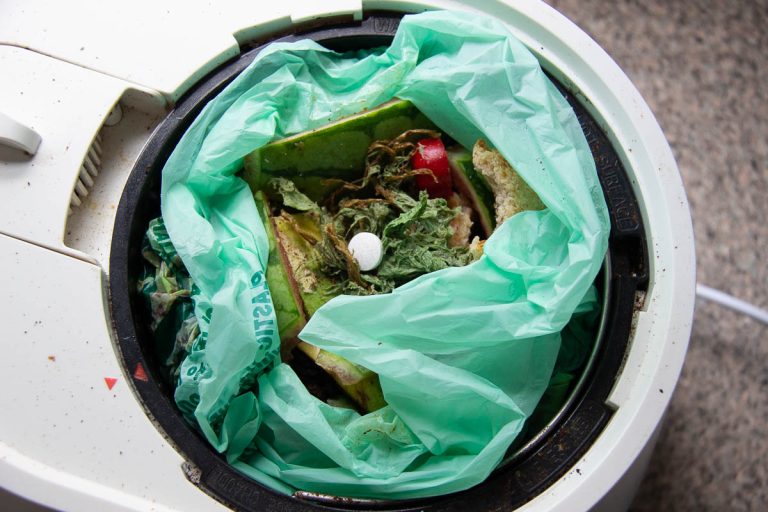
![Unbound Merino Review: Travel-Testing a Merino Wool Wardrobe [2023 UPDATE]](https://www.tiltedmap.com/wp-content/uploads/2022/10/Unbound-Merino-womens-travel-clothing-San-Francisco-merino-leggings-t-shirt-©KettiWilhelm2022--768x576.jpg)
![Italo vs TrenItalia vs ItaliaRail [An Expat’s Guide to Train Travel in Italy]](https://www.tiltedmap.com/wp-content/uploads/2020/06/TrenItalia-regional-train-with-graffiti-in-Umbria-Italy-©KettiWilhelm2020-768x576.jpg)
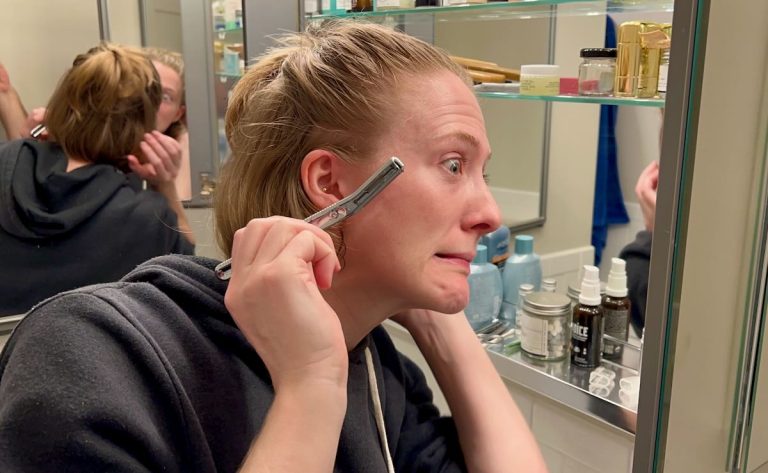
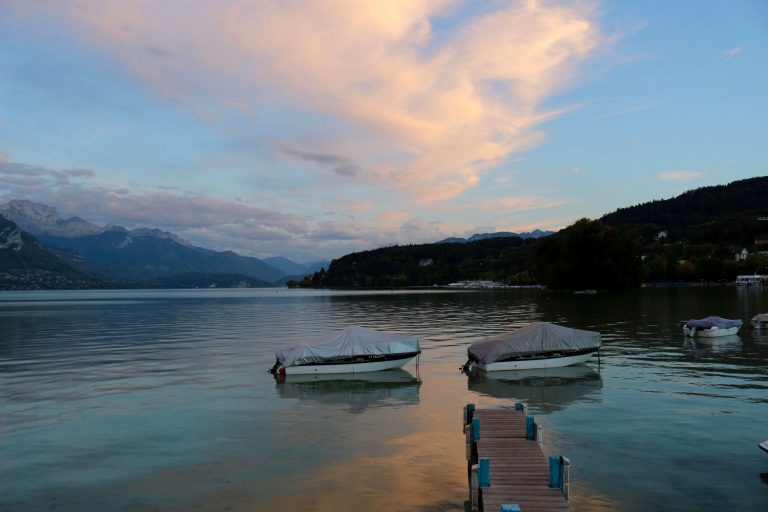
![4 Great Shampoo Bar Reviews [A Low-Pressure Intro to Plastic-Free July]](https://www.tiltedmap.com/wp-content/uploads/2020/07/Plastic-free-shampoo-bars-byhumankind-HiBAR-Ultimate-Body-Bar-©KettiWilhelm2020-768x428.jpg)
Very well done, Ketti, and certainly makes one think twice about traveling during these times! I have friends who tried to go to Hawaii last week from MT but their test didn’t make it back in time so they went to San Diego from Seattle instead!
Thank you, Mona! I wonder, did your friends use the New Jersey mail-in clinic for their tests? Or did they do the airport option? That’s exactly what I was afraid of – it seemed like a toss-up whether the results would be back in time. Hope they enjoyed San Diego at least!
So interesting to read the planning that went into getting to Hawaii right now. I would have gone to Trader Joe’s too. Glad that you arrived safely!
Haha yeah, it’s the little things like TJ’s that I miss age a few months in Montana! Thanks for commenting, Mikkel! Glad you enjoyed the article. 😊
Ketti
Thanks for the informative article. Any thoughts on Tulum? (Wouldn’t be until late summer – I know a lot can and will change from now to then)
Hi Stephanie,
Glad you enjoyed it!
I haven’t been to Tulum and I don’t know a lot about the situation there, but I have been keeping on eye on Mexico in general. I’ve heard that in a lot of towns, at least the rules are being followed well, and people are being conscientious about masks, social distance, etc. (which is something I’m loving here on Maui right now – I haven’t seen a single person even attempt to go without a mask in a grocery store or restaurant, for example. It really takes the stress level down a notch.) I hope Tulum is similar, and I’d suggest you ask Nomadic Matt – he just posted on Instagram about being there.
Thanks for commenting and keep in touch! 🙂 I’d love to hear what you learn and if you decide to go for a Tulum trip!
Ketti
We were supposed to go to the Big Island the week before Christmas but after the testing requirement change and my husbands paralyzing fear of crowds, I moved the trip to the last week of February. But if he can’t get the vaccine by then, we’ll probably scrap it to December 2021 or early 2022. The only reason we booked this trip to begin with was a killer timeshare presentation deal (we are experts at not buying timeshares) and I want to see the humpbacks after realizing when we were in Maui last August they come down in the winter. So fingers crossed.
“Experts at not buying timeshares” – ha! That’s a great skills to have! 😂
I understand – my husband has a similar fear/hatred of crowds, even pre-COVID. But that was one of my favorite things about Maui this time – there was hardly anyone anywhere! Even the road to Hana was nearly empty, and Hawaii in general is a pretty easy place to avoid people and spend an entire trip in the great outdoors. (I’ll publish another post soon about what it was like being there during COVID, so stay tuned!)
I hope your trip comes together well, Carlie! Thanks for your comment and keep in touch. 🙂
Ketti
Looking for more information on the approved testing sites in Montana to travel to Hawaii. Can you help me out with that? Are they rapid test? thank you!
Hi Emily,
When I went, the only Hawaii-approved testing site in Montana was the CVS in Helena. (This is listed at the link above in the article, but here it is again – all the approved testing options: hawaiicovid19.com/travel-partners )
After a quick look over the list again today, it doesn’t seem that any others have been added. Furthermore, when I clicked on the CVS link via the Hawaii Travel Partners site (that link above) and tried to make an appointment, it responded with a notification that they can’t guarantee turnaround times and “travelers to Hawaii should make other testing plans.” That was exactly the conclusion that I came to when I was researching all of this in November, and apparently CVS now officially agrees!
That’s why I ended up using Discovery Healthy at the Seattle airport, as I described above in the blog. The $250 price tag + a night in a Seattle hotel were painful, but it was truly the only option that was reasonably certain to work from Montana.
Hope that helps! If so, I’d appreciate if you like & follow my pages on Instagram and Facebook to keep in touch. 🙂 I also have another post about Maui during the pandemic that might be helpful for you. Good luck with your trip planning!
Ketti